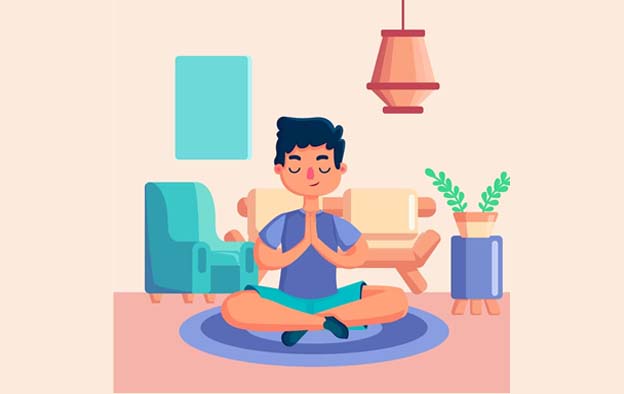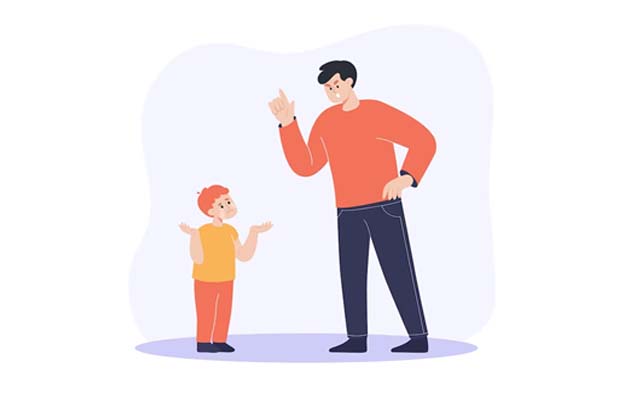Yoga is not just for adults; it can be a fantastic tool for children too, helping to cultivate self-awareness and improve concentration. Specifically designed yoga asanas for kids can be a fun activity that harmonises mind and body, steering their energy towards focused and productive channels. Dive in to discover how specific yoga asanas can enhance your kid’s concentration, paving the way for better learning and development.
Also Read: The importance of physical education for young children
Benefits of Yoga for Kids
Here are some benefits of yoga for kids:
Importance of Concentration
Concentration plays a vital role in a child’s academic performance and overall development. It enables them to absorb information, solve problems, and complete tasks efficiently. By enhancing concentration, children can better engage in learning activities and improve their cognitive abilities. Yoga provides a holistic approach to address concentration-related challenges by calming the mind and improving focus.
Also Read: Discover the Benefits of Yoga – Encouraging a Healthy Lifestyle
Yoga Asanas to Improve Concentration
Here are some exercises of yoga for concentration and memory:
Balasana (Child’s Pose)
Balasana is a calming pose that helps release tension and relax the mind. To perform this asana, kneel on the floor with your buttocks resting on your heels. Lower your torso forward and rest your forehead on the mat. Extend your arms forward or rest them alongside your body. Hold the pose for a few deep breaths, allowing your body to relax.
Vrikshasana (Tree Pose)
Vrikshasana is a standing pose that enhances balance and focus. Stand tall with your feet hip-width apart. Shift your weight onto your left foot and bend your right knee. Place your right foot on your inner left thigh or calf, avoiding the knee joint. Find your balance and bring your hands together at your heart centre. Focus your gaze on a fixed point in front of you. Hold the pose for several breaths and repeat on the other side.
Padmasana (Lotus Pose)
Padmasana is a classic seated pose that promotes calmness and concentration. Sit on the floor with your legs stretched out in front of you. Bend your right knee and place your right foot on your left thigh. Bend your left knee and place your left foot on your right thigh. Keep your spine straight and rest your hands on your knees. Close your eyes and focus on your breath. Hold the pose for a few minutes, gradually increasing the duration.
Bhramari Pranayama (Bee Breath)
Bhramari Pranayama is a breathing exercise that calms the mind and enhances concentration. Sit in a comfortable position and close your eyes. Place your index fingers on your ears, gently closing the ear openings. Take a deep breath in and exhale slowly while making a humming sound like a bee. Focus on the sound and feel the vibrations in your head. Repeat the process for several rounds, allowing yourself to relax.
Shavasana (Corpse Pose)
Shavasana is a relaxation pose that rejuvenates the mind and body. Lie flat on your back with your legs extended and arms relaxed by your sides. Close your eyes and take slow, deep breaths. Scan your body from head to toe, consciously relaxing each body part. Stay in this pose for 5-10 minutes, allowing your mind and body to unwind.
Sarvangasana (Shoulder Stand)
Sarvangasana is an inverted pose that improves blood circulation to the brain, enhancing mental clarity. Lie flat on your back with your arms alongside your body. Lift your legs together, keeping them straight. Place your hands on your lower back for support. Slowly lift your legs and hips off the ground, raising your body vertically. Support your lower back with your hands and straighten your spine. Hold the pose for a few breaths and gradually increase the duration with practice.
Dhyana (Meditation)
Dhyana, or meditation, is a practice that cultivates mindfulness and enhances focus. To practise meditation find a quiet and comfortable place to sit. Close your eyes and bring your attention to your breath. Observe each inhalation and exhalation, letting go of distracting thoughts. If your mind wanders, gently bring your focus back to your breath. Start with a few minutes and gradually increase the duration of your meditation sessions.
Ardha Matsyendrasana (Half Spinal Twist)
The seated twist known as Ardha Matsyendrasana stimulates the spine and improves mental agility. Legs out in front of you, sit down on the floor. Place your right foot close to your left thigh on the ground while bending your right knee. Position your left elbow such that it is on the outside of your right knee. Exhale while rotating your body to the right, then inhale to lengthen your spine. Gently tilt your head to the right so that you can see your shoulder. Hold the position for a few breaths and then repeat on the opposite side.
Also Read: Amazing Benefits of Yoga for Students
How to Perform Yoga Asanas for Improved Concentration
To perform yoga asanas for improved concentration, follow these general guidelines:
- Find a quiet and clean space to practise.
- Wear comfortable clothing that allows free movement.
- Start with a warm-up, such as gentle stretches or a few rounds of Surya Namaskar.
- Focus on your breath throughout the practice, inhaling and exhaling deeply.
- Maintain proper alignment in each pose, avoiding any strain or discomfort.
- Practise regularly to experience the benefits of yoga.
Precautions for Kids Practising Yoga
When introducing yoga to children, it’s important to consider the following precautions:
- Always ensure children are supervised by a qualified instructor who has experience teaching yoga to children.
- The environment should be safe and secure, with enough space for each child to move around comfortably without bumping into others or objects.
- Provide yoga mats that are appropriate for children’s size and are non-slip to prevent accidents during practice.
- Encourage children to drink sufficient water before and after the session, but avoid heavy meals before practising yoga to prevent discomfort.
- Start each session with a proper warm-up to gradually increase the heart rate and to loosen up the muscles to prevent strains.
- Choose yoga poses that are appropriate for the children’s age group, keeping in mind their physical development and flexibility levels.
- Encourage children to listen to their bodies and respect their individual limits to avoid overstretching and injuries.
- Breathing:
- Teach children to breathe correctly during yoga practice, encouraging them to breathe deeply and evenly to support their movements.
- Maintain a slow and steady pace, giving children enough time to get into and out of each pose safely.
- Allow for regular rest periods where the children can relax and rejuvenate before moving on to the next series of poses.
- Finish each session with a cool-down period, gradually slowing down the pace and allowing the heart rate to return to normal.
- Encourage feedback from the children, allowing them to express how they felt during the practice and to report any discomfort or pain.
- Use positive reinforcement to encourage children and to foster a positive attitude towards yoga and physical activity in general.
- Ensure you are aware of the emergency procedures at the venue and have a first aid kit handy.
- Encourage personal hygiene, asking children to wash hands before and after the session, and keeping the yoga mats and space clean.
Еncouragе your child to practisе yoga rеgularly, crеating a positivе impact on thеir acadеmic pеrformancе and ovеrall dеvеlopmеnt. With a focus on holistic dеvеlopmеnt, EuroSchool goеs bеyond traditional acadеmics to support thе ovеrall growth and wеll-bеing of еvеry child.











